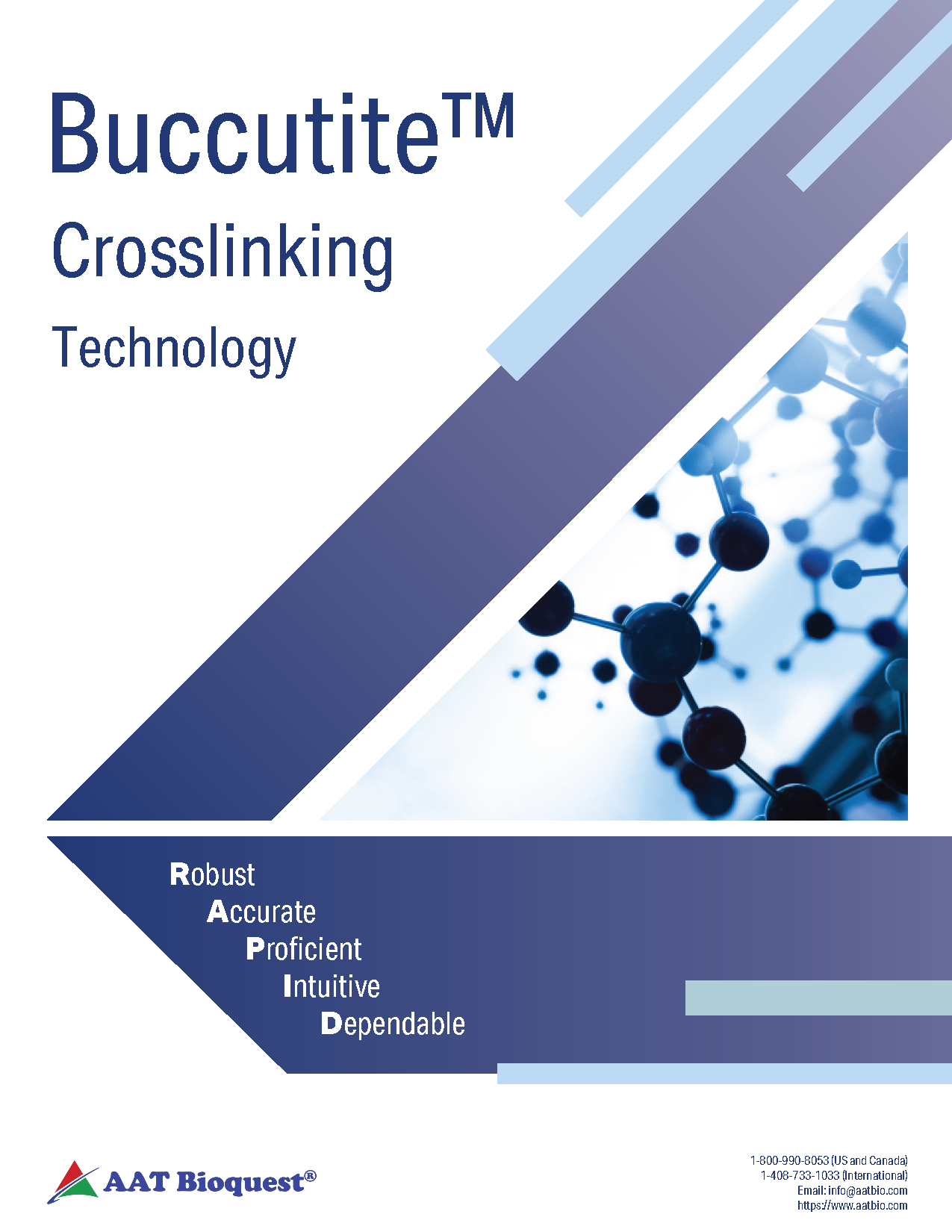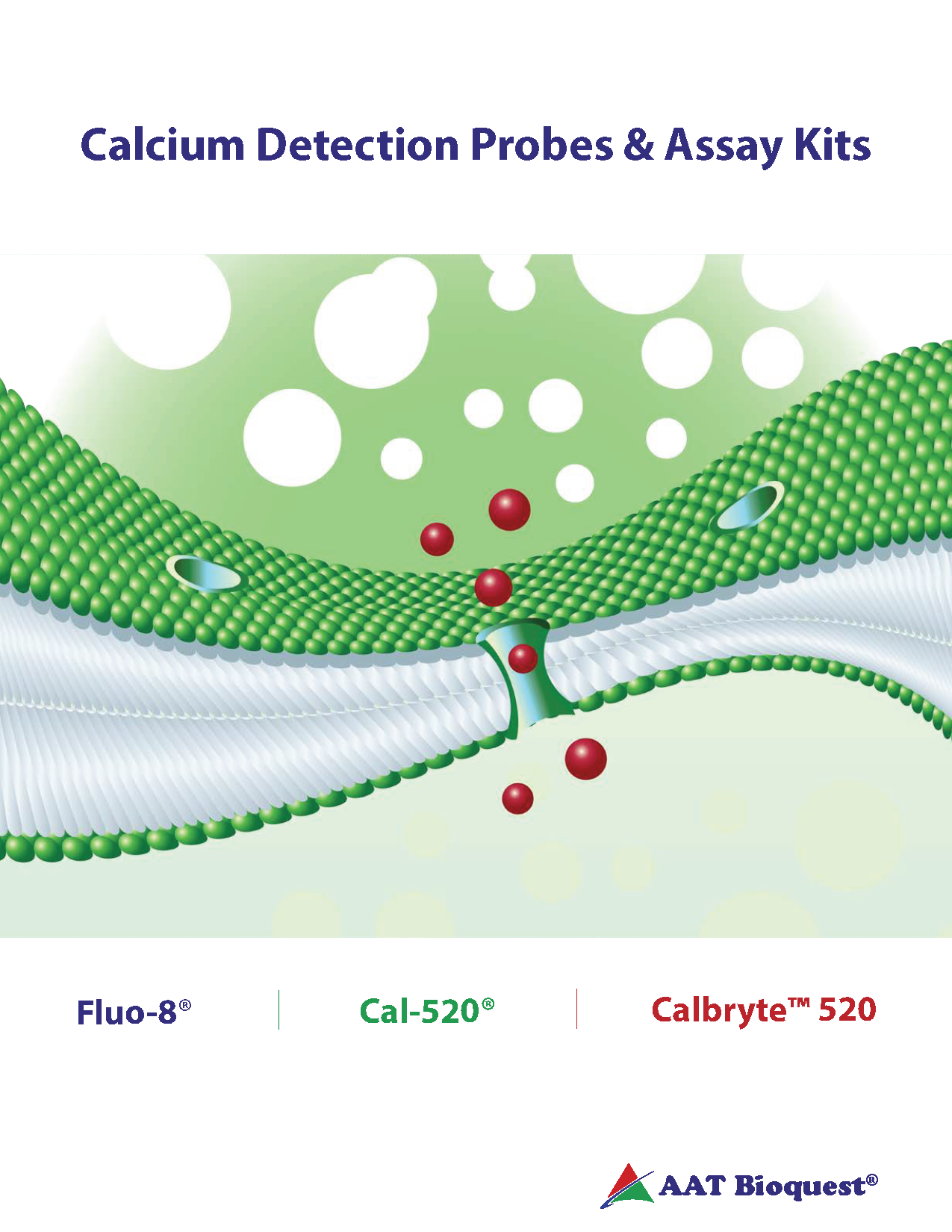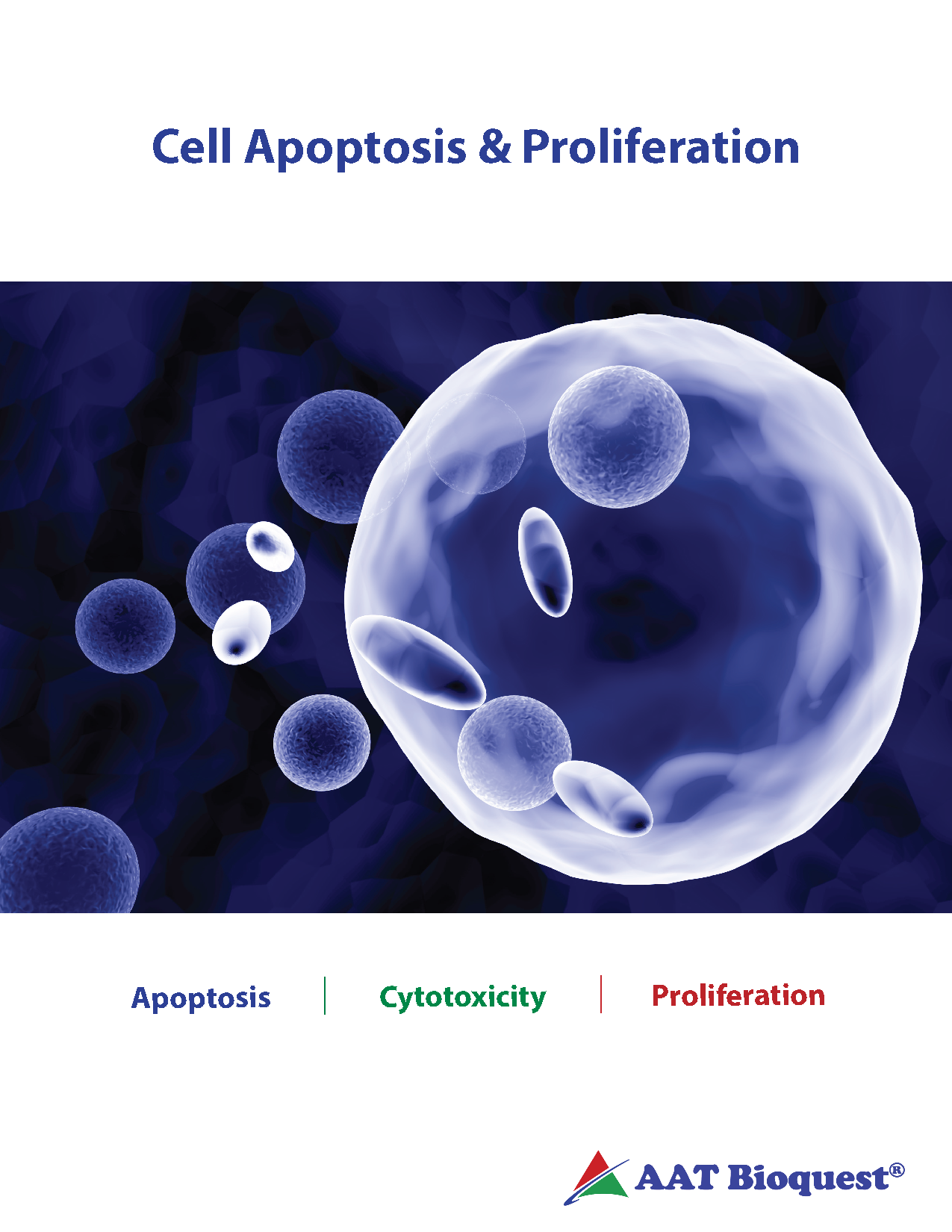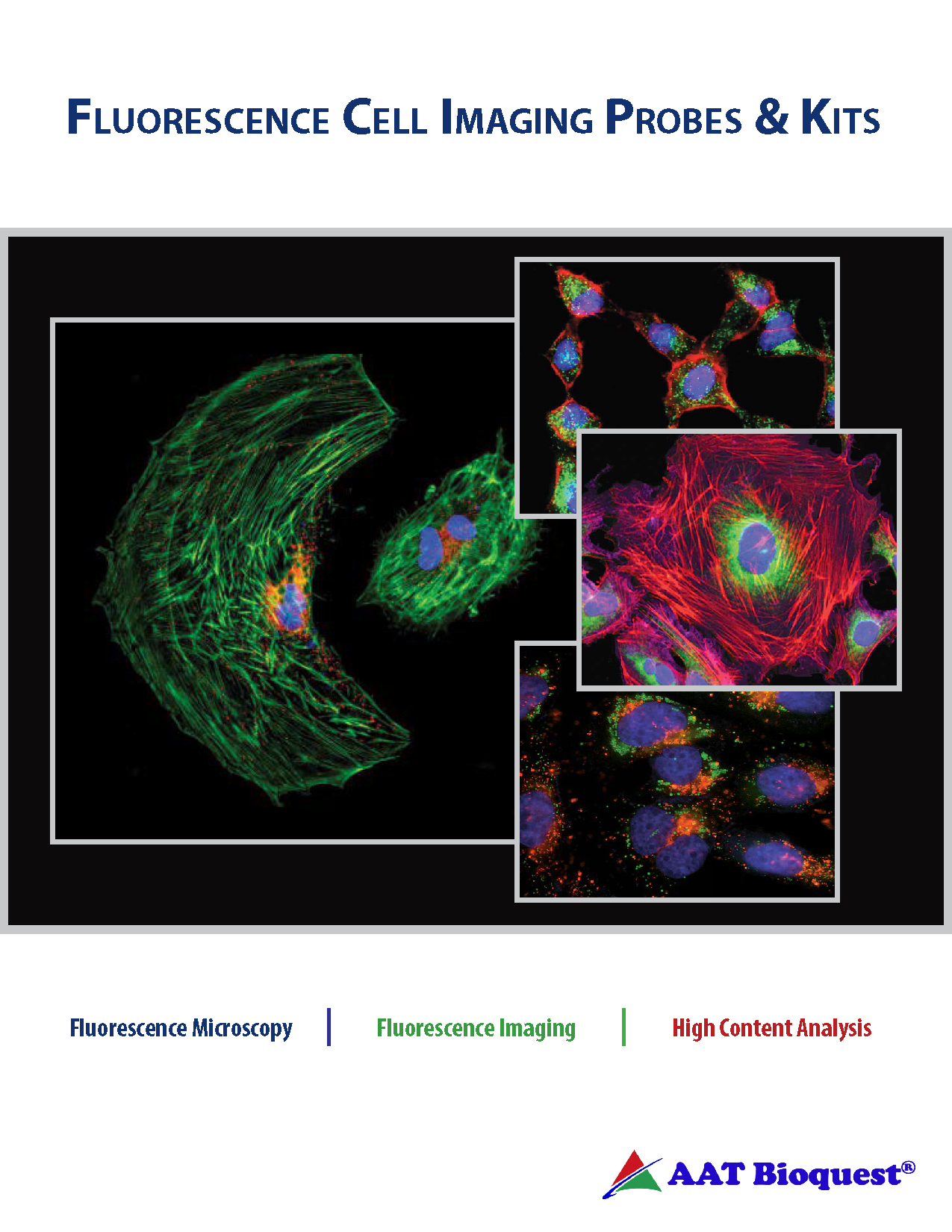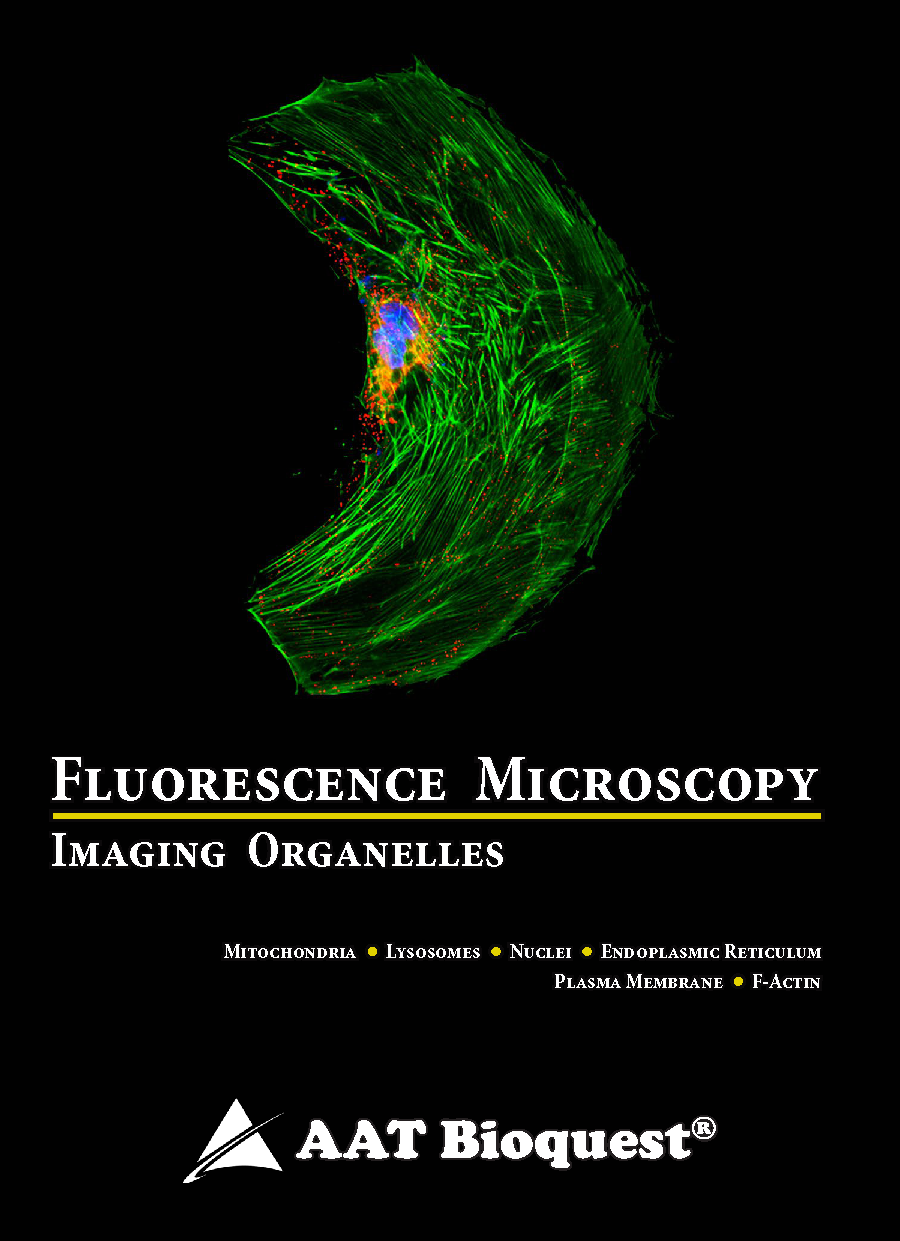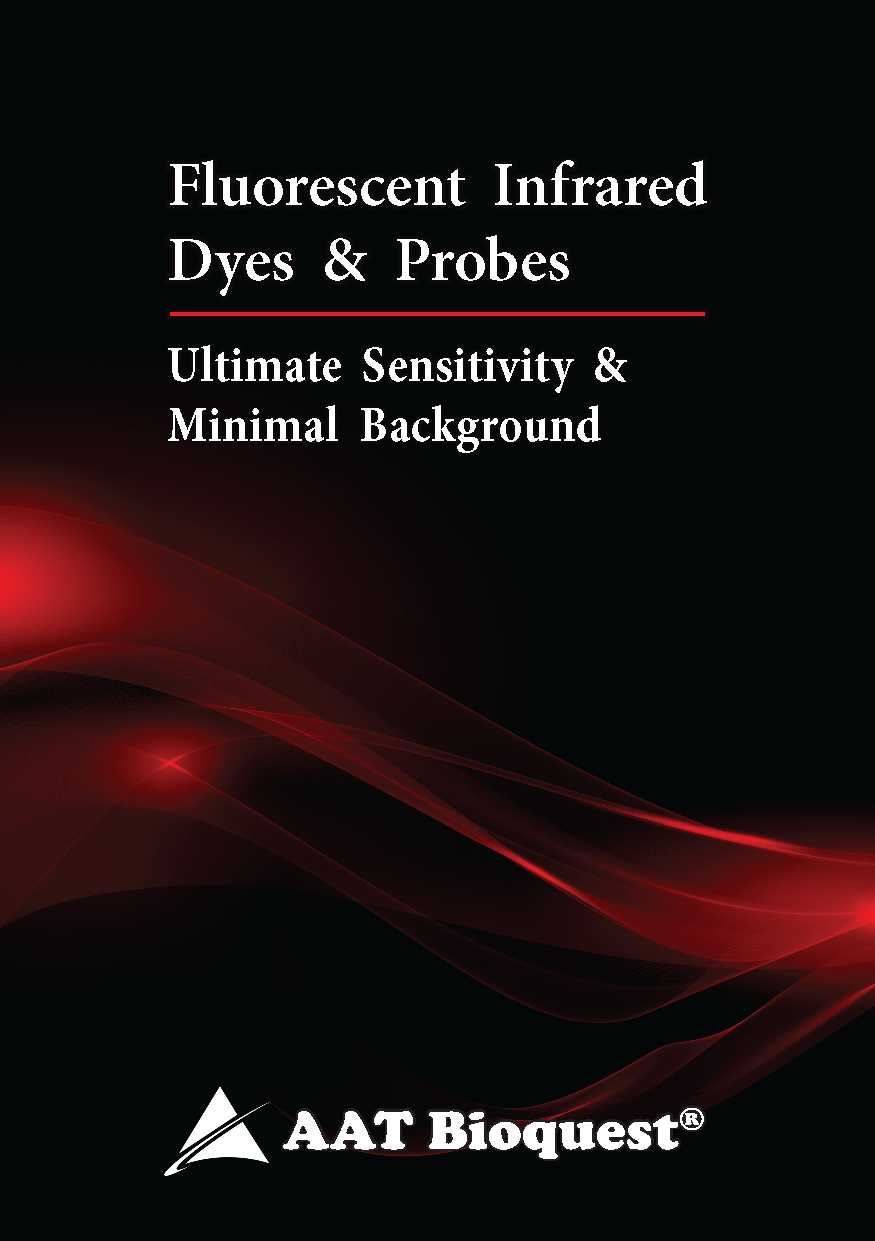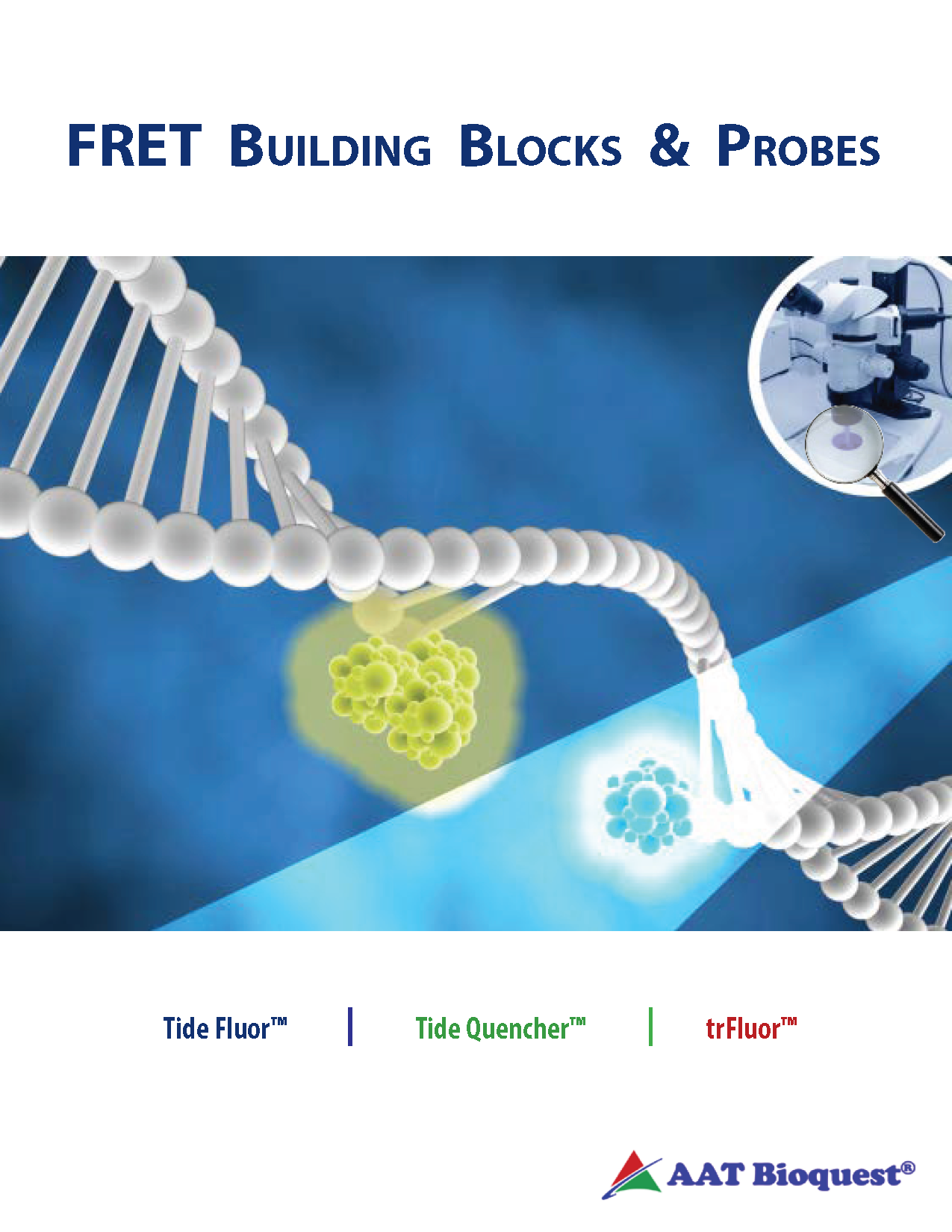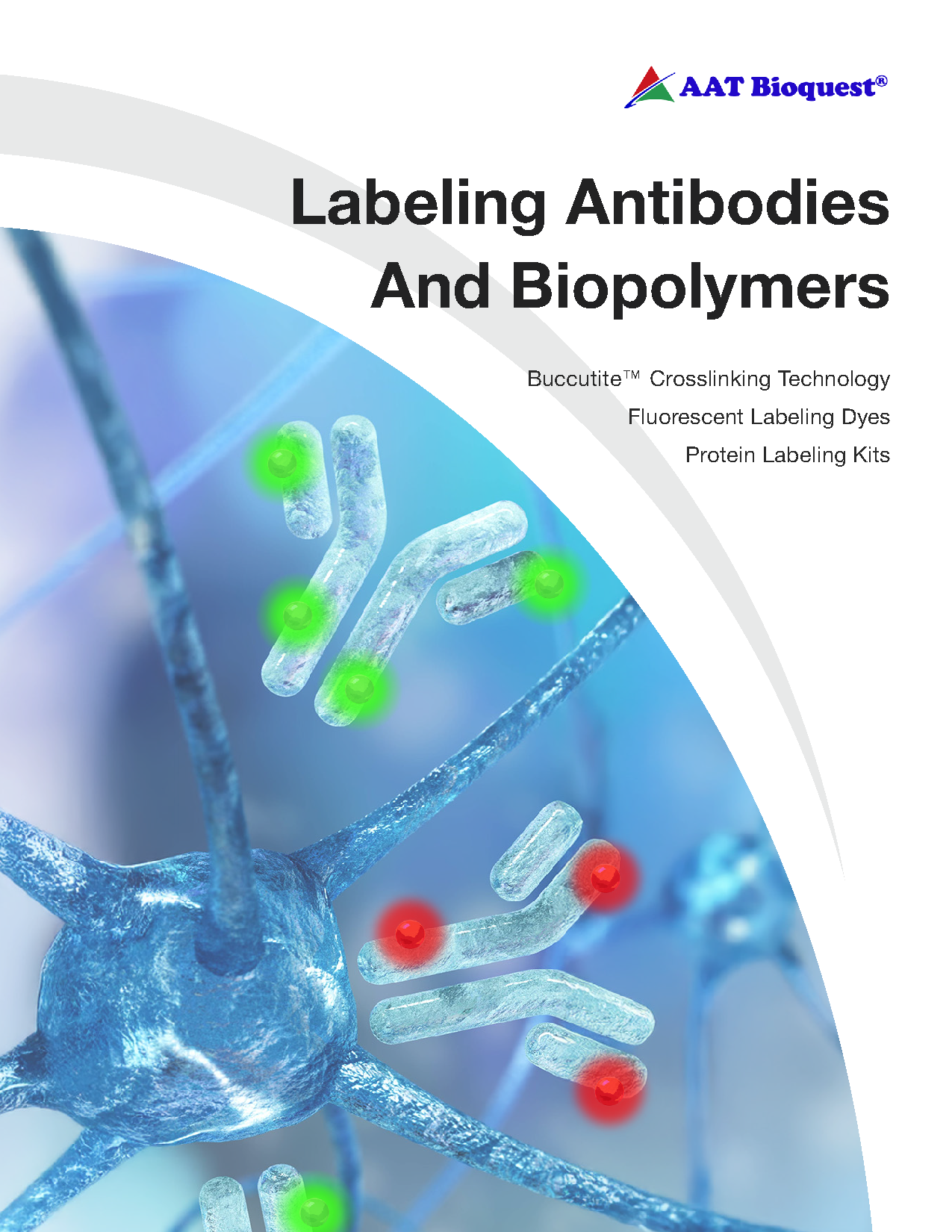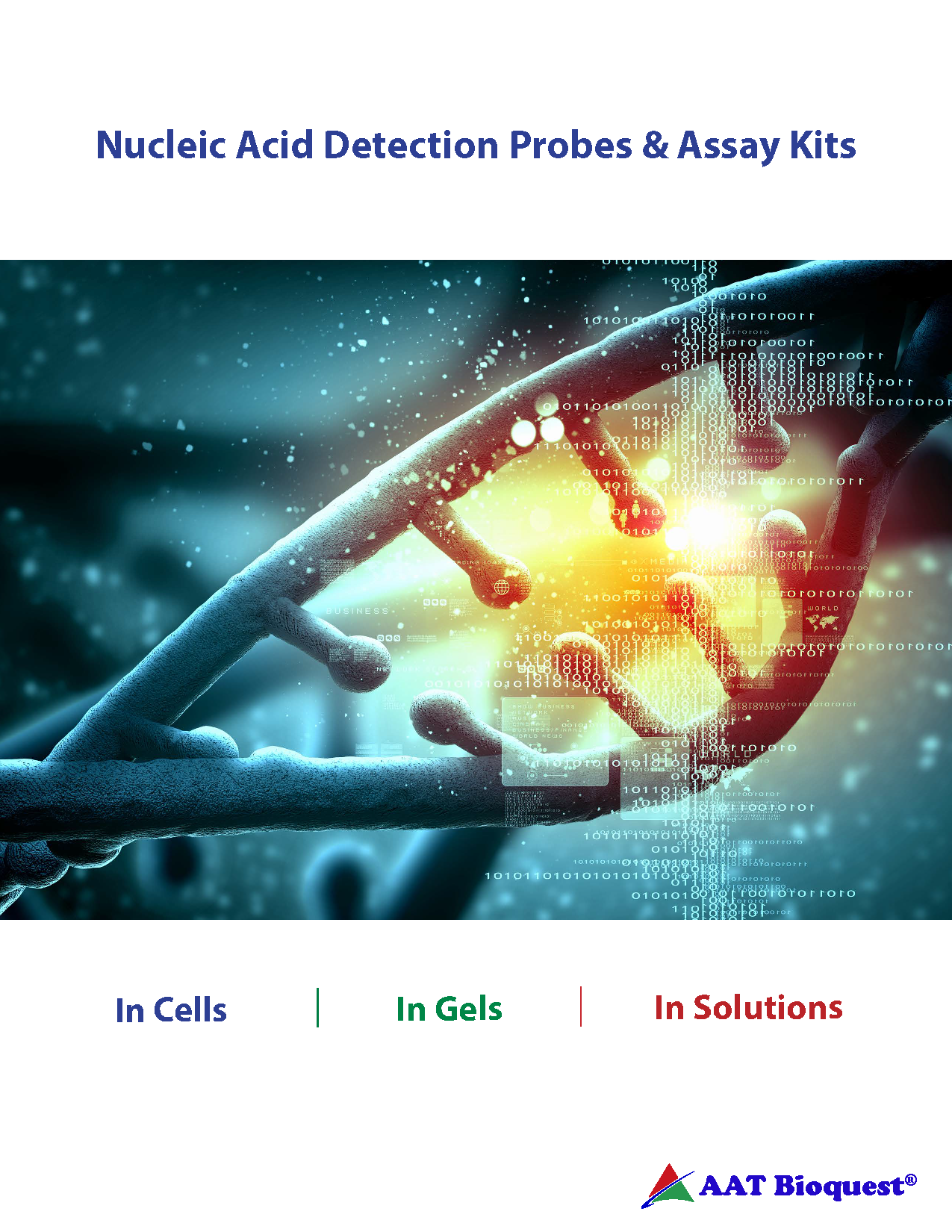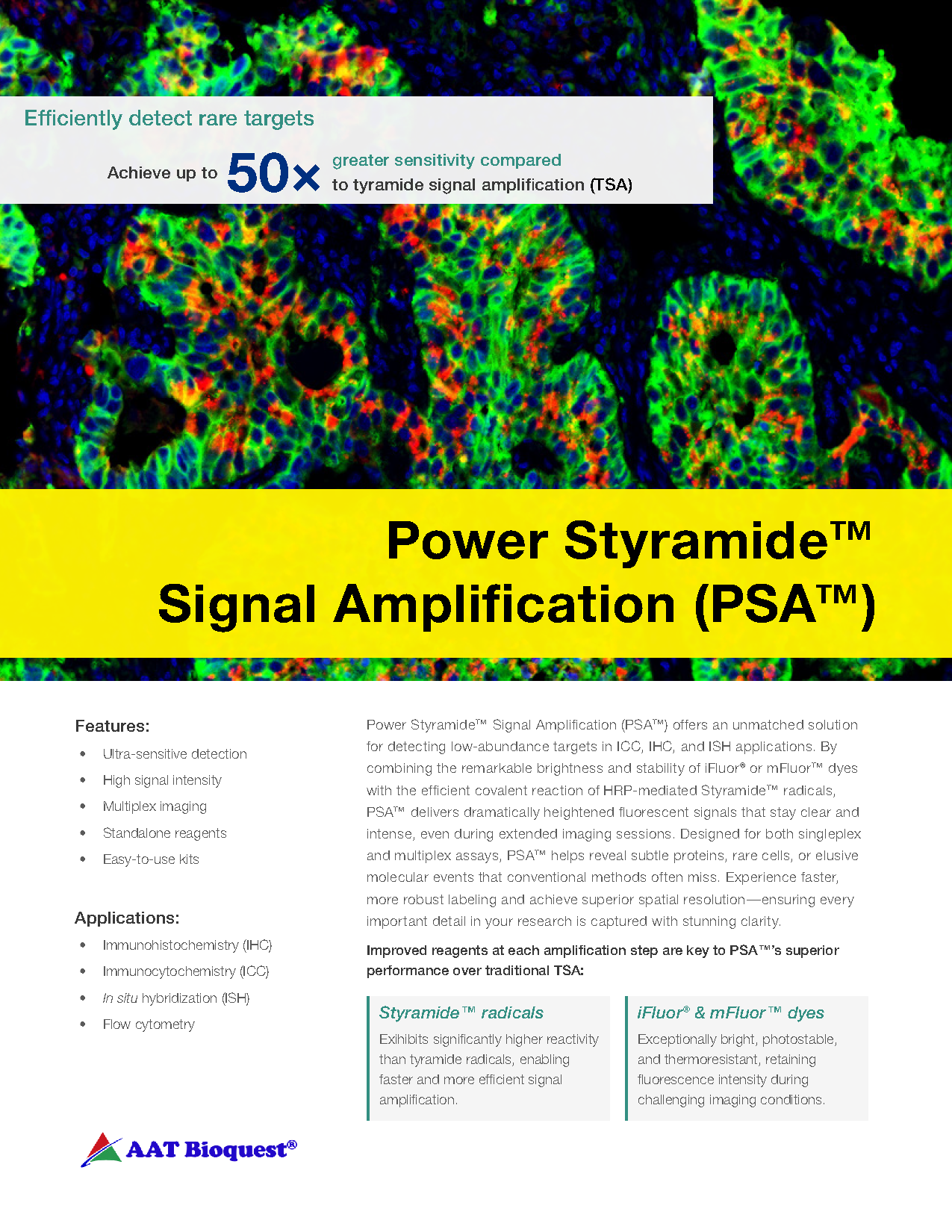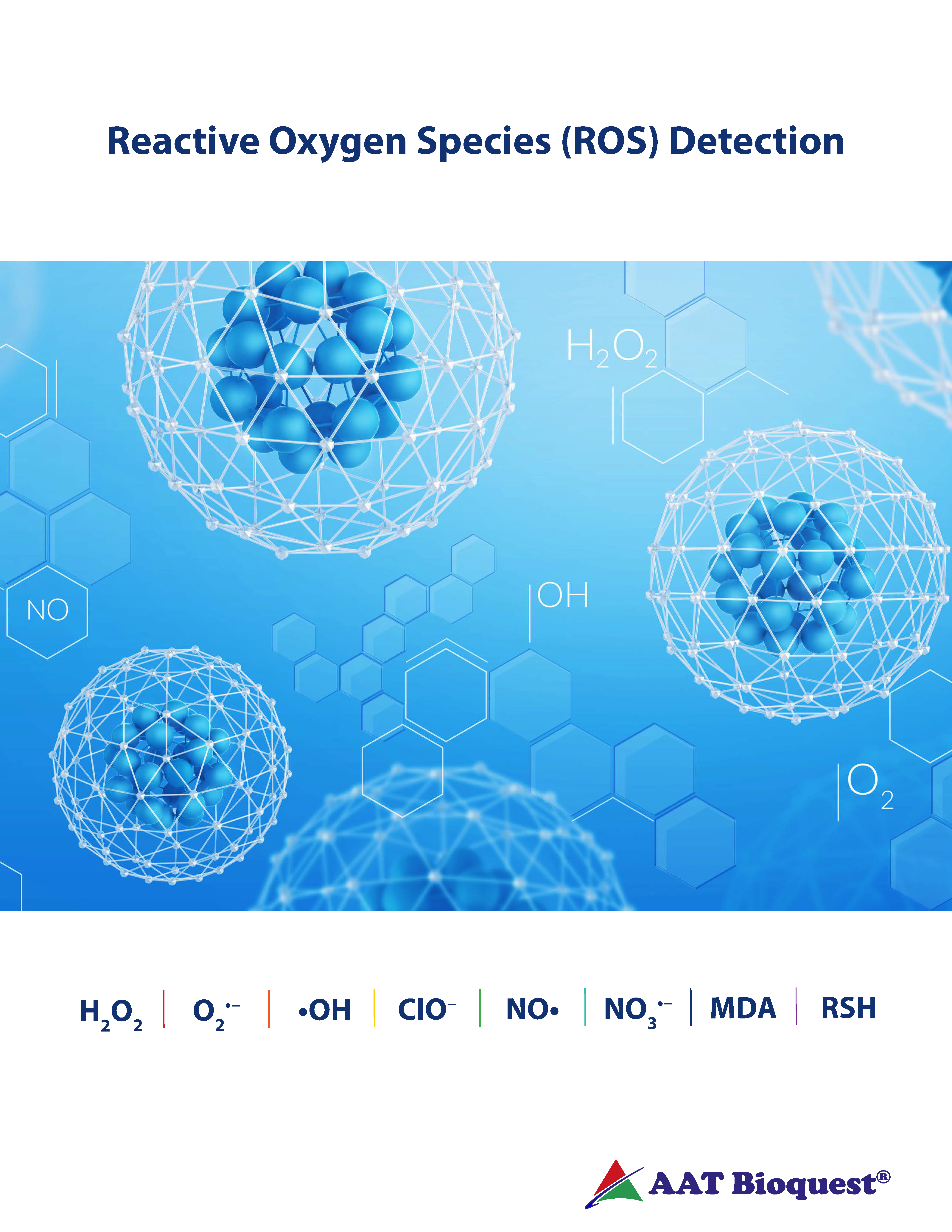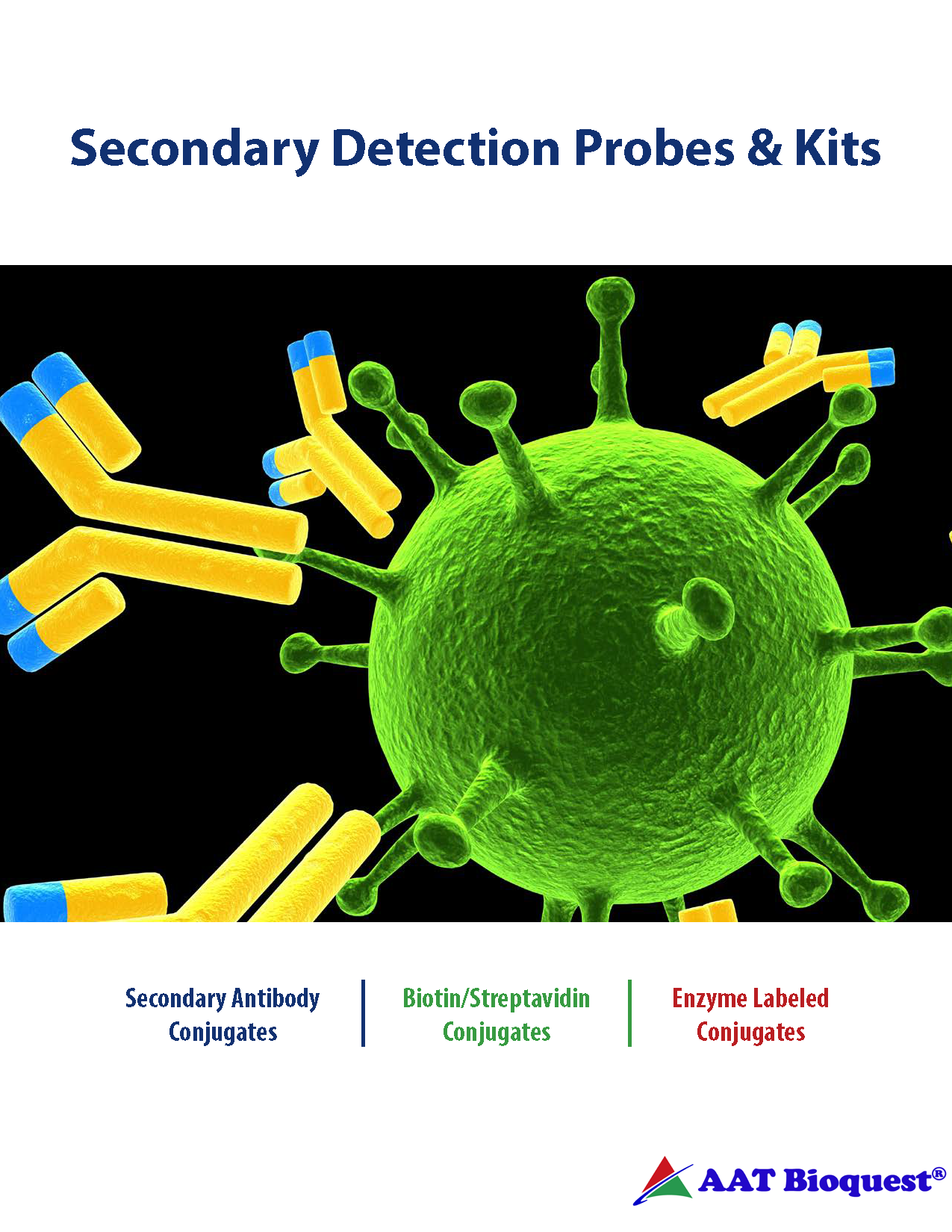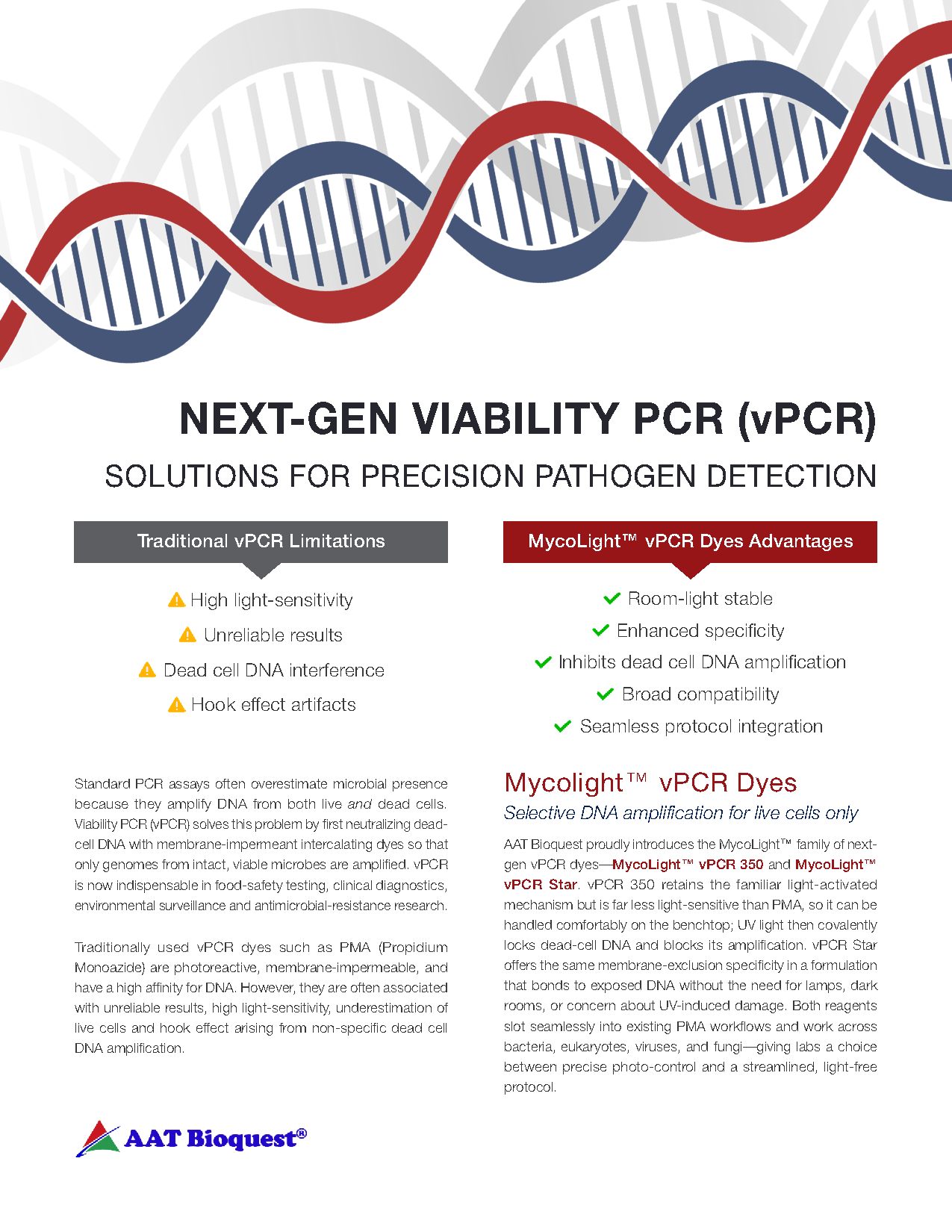Brochures and Catalogs
Title | Description |
|---|---|
An introduction to Buccutite™ reagents and kits that enable antibody conjugation to macromolecules (e.g., ALP, HRP, PE, APC) for flow cytometry and immunoassay applications | |
An overview of calcium detection using single wavelength indicators (e.g., Fluo-8®, Cal-520®, Calbryte™ 520), ratiometric indicators (e.g., Fura-8™), and high-throughput screening (e.g., FLIPR® assays) | |
An overview of methods to monitor apoptosis (e.g., caspase activity assays, annexin V conjugates, TUNEL assays, mitochondrial membrane potential assays), cell proliferation (e.g., CytoTell® dyes), cell viability, and cytotoxicity | |
An overview of methods to quantify cell metabolites (e.g., acetylcholine, ascorbic acid, lactic acid, pyruvate, urea), cell signaling molecules (e.g., cAMP), enzyme cofactors (e.g., NAD, NADP), and oxidative stress (e.g., H2O2) | |
An overview of reagents and kits useful for monitoring cell viability (e.g., Live or Dead™), cytotoxicity (e.g., Cell Meter™), cell proliferation (e.g., CFSE), and cell cycle (e.g., Cell Explorer™) | |
An overview of assays useful for the study of enzymes such as proteases (e.g., caspases, MMPs), oxidases (e.g., HRP, catalase), dehydrogenases (e.g., LDH), kinases, transferases, and luciferases using absorbance, fluorescence, or luminescence detection | |
An overview of organelle-selective dyes that can be used to stain mitochondria (e.g., MitoLite™), lysosomes (e.g., LysoBrite™), nuclei (e.g., Hoechst, DAPI, Nuclear Green™), plasma membrane (e.g., Cell Navigator™), and F-actin (e.g., iFluor®-phalloidin conjugates) | |
An introduction to using organelle-selective stains for fluorescence microscopy to image mitochondria, lysosomes, nuclei, ER, plasma membrane and F-actin | |
A brief overview of near-infrared (NIR) fluorescent dyes useful for low-background biological imaging (e.g., iFluor® 680/750/790, ICG derivatives) | |
An overview of fluorescence resonance energy transfer (FRET), FRET efficiency, FRET pair selection, and useful donors (e.g., Tide Fluor™) and acceptors (e.g., Tide Quencher™) | |
An overview of crosslinking technologies (e.g., succinimidyl ester, maleimide, Buccutite™, click chemistry), available labeling dyes (e.g., iFluor®, mFluor™) and available labeling kits (e.g., ReadiLink™) to facilitate bioconjugation of antibodies and biopolymers | |
An overview of methods to detect nucleic acids in cells (e.g., DAPI, Hoechst, PI, 7-AAD), solution (e.g., Helixyte™, StrandBrite™), and gels | |
An overview of fluorescent oligonucleotide labels (e.g., FAM, Cy3, Tide Fluor™), non-fluorescent quenchers (e.g., DABCYL, Tide Quencher™), and solid-phase synthesis reagents (e.g., phosphoramidites) | |
An overview of PE, APC, and PerCP tandem dyes and their usage in conventional and spectral flow cytometry | |
An overview of available peptide labels and quenchers, including terminal (e.g., C-, N-) and residue (e.g., Asp, Lys) specific reactivities | |
An introduction to phycobiliproteins (e.g., phycoerythrin, allophycocyanin), their usage in flow cytometry, their usage as FRET donors, and methods for bioconjugation to targets of interest | |
An overview of physiological probes, with a focus on calcium indicators (e.g., Fluo-8®, Cal-520®), pH probes, and membrane potential measurements | |
An introduction to Power Styramide™ Signal Amplification (PSA™) technology and its uses in applications such as immunofluorescence (IF), immunohistochemistry (IHC), immunocytochemistry (ICC), and fluorescence in situ hybridization (FISH) | |
An overview of methods for quantifying reactive oxygen species (ROS), including total ROS (e.g., ROS Brite™), hydrogen peroxide (e.g., Amplite®, OxiVision™), peroxynitrite (e.g., DAX-J2™), and mitochondrial ROS (e.g., MitoROS™) | |
An overview of available secondary antibody conjugates, for targeting mouse and rabbit IgGs, using labels such as iFluor® dyes, streptavidin, HRP or ALP | |
An introduction to viability PCR (vPCR), a technology which enables selective amplification of live-cell DNA using light-activated dyes such as MycoLight™ vPCR 350 and MycoLight™ vPCR Star | |
Browse by Cover
Browse by Resource

